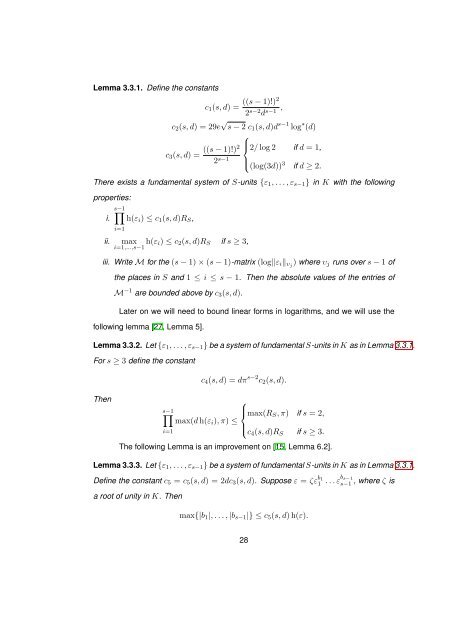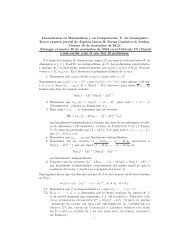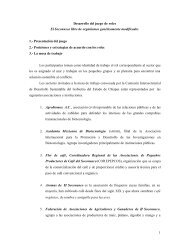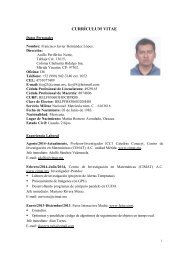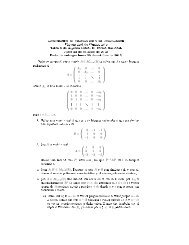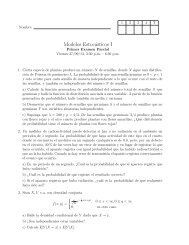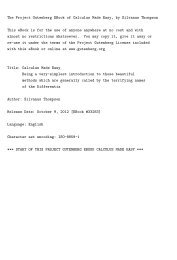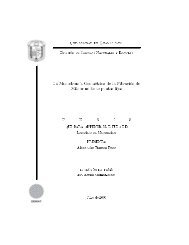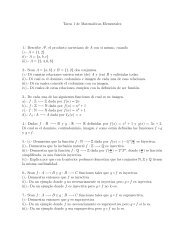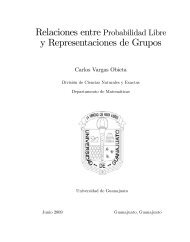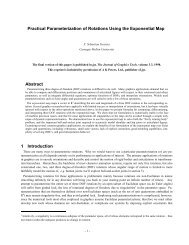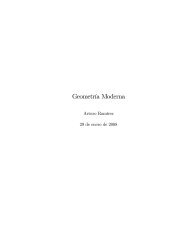S-integral points on hyperelliptic curves Homero Renato Gallegos ...
S-integral points on hyperelliptic curves Homero Renato Gallegos ...
S-integral points on hyperelliptic curves Homero Renato Gallegos ...
- No tags were found...
You also want an ePaper? Increase the reach of your titles
YUMPU automatically turns print PDFs into web optimized ePapers that Google loves.
Lemma 3.3.1. Define the c<strong>on</strong>stantsc 1 (s, d) =((s − 1)!)22 s−2 d s−1 ,c 2 (s, d) = 29e √ s − 2 c 1 (s, d)d s−1 log ∗ (d)c 3 (s, d) =((s − 1)!)22 s−1 ⎧⎪⎨⎪ ⎩2/ log 2 if d = 1,(log(3d)) 3 if d ≥ 2.There exists a fundamental system of S-units {ε 1 , . . . , ε s−1 } in K with the followingproperties:i.ii.s−1∏h(ε i ) ≤ c 1 (s, d)R S ,i=1maxi=1,...,s−1 h(ε i) ≤ c 2 (s, d)R S if s ≥ 3,iii. Write M for the (s − 1) × (s − 1)-matrix (log‖ε i ‖ υj ) where υ j runs over s − 1 ofthe places in S and 1 ≤ i ≤ s − 1. Then the absolute values of the entries ofM −1 are bounded above by c 3 (s, d).Later <strong>on</strong> we will need to bound linear forms in logarithms, and we will use thefollowing lemma [27, Lemma 5].Lemma 3.3.2. Let {ε 1 , . . . , ε s−1 } be a system of fundamental S-units in K as in Lemma 3.3.1.For s ≥ 3 define the c<strong>on</strong>stantc 4 (s, d) = dπ s−2 c 2 (s, d).Then⎧s−1∏⎪⎨ max(R S , π) if s = 2,max(d h(ε i ), π) ≤i=1⎪⎩ c 4 (s, d)R S if s ≥ 3.The following Lemma is an improvement <strong>on</strong> [15, Lemma 6.2].Lemma 3.3.3. Let {ε 1 , . . . , ε s−1 } be a system of fundamental S-units in K as in Lemma 3.3.1.Define the c<strong>on</strong>stant c 5 = c 5 (s, d) = 2dc 3 (s, d). Suppose ε = ζε b 11 . . . ε b s−1s−1 , where ζ isa root of unity in K. Thenmax{|b 1 |, . . . , |b s−1 |} ≤ c 5 (s, d) h(ε).28


